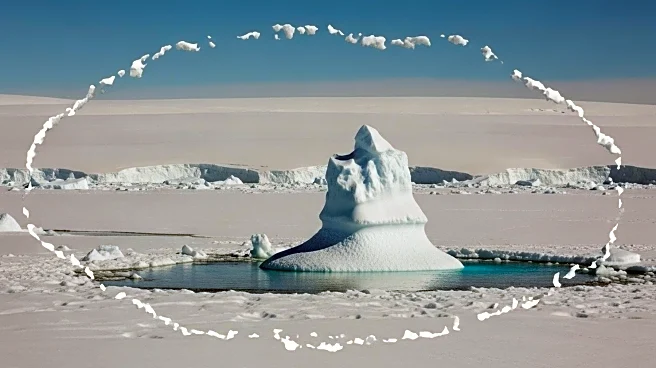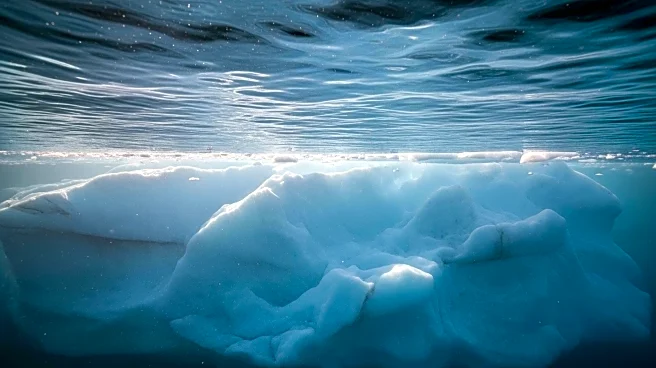What's Happening?
A study led by Nagoya University reveals that East Antarctica's interior is warming faster than its coastal areas due to increased warm air flow from the Southern Indian Ocean. This warming mechanism, identified through a 30-year dataset, suggests that current climate models may underestimate future ice loss rates. The research utilized data from unmanned weather stations, showing temperature increases of 0.45-0.72°C per decade, faster than the global average. The study highlights the need for revised climate models to accurately predict Antarctic ice loss.
Why It's Important?
The rapid warming of Antarctica's interior poses significant implications for global sea level rise and climate change. As the world's largest ice reservoir, changes in Antarctic ice dynamics could accelerate sea level rise, impacting coastal communities worldwide. The study's findings challenge existing climate models, emphasizing the need for more accurate predictions to inform policy and mitigation strategies. Understanding the warming mechanisms in Antarctica is crucial for global climate efforts and future environmental planning.
Beyond the Headlines
The study underscores the importance of comprehensive climate monitoring in remote regions like Antarctica. The warming of the interior could lead to increased surface melting, affecting ecosystems and global weather patterns. The research highlights the interconnectedness of oceanic and atmospheric systems, prompting further investigation into climate dynamics. Ethical considerations arise regarding the responsibility of nations to address climate change impacts and support vulnerable communities.











